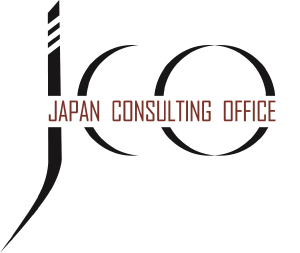Da sehr oft nachgefragt wird, was JCO eigentlich den japanischen Teilnehmern vermittelt, hier ein japanischer Newsletterartikel:
„Time is money!
(translation from JCO article in Japanese)
The Japanese government has launched a new work-style reform in Japan as from April 1st, 2019 which steers the Japanese labour market towards a more globally aligned approach to work and efficiency. One of the goals appears to be reduce overly long working hours. It is an interesting fact that Japanese have the highest sleep deficit in the world which may be connected to the traditional Japanese working style in which time spent at work can be stretched out if needed.
In Western business cultures however, the emphasis on a positive Work Life Balance and therefore efficient use of time is one the main motivational factors for staff of any company. As a result, work time is limited and cannot be extended easily. In this article we are going to look at potential ways to make your local organisation more efficient by saving time.
「Time is money」is a phrase everybody knows. It dates back to the 15th century when it was coined by the Croatian merchant Cotrugli who wrote that “for the merchant losing time and losing money are the same thing”.
Now reading this, we understand that time needs to be viewed as another asset to be measured and controlled just as any other asset like inventory, cash, property and equipment. This may sound like common sense but how is this principle applied in reality?

In other words, are companies always in full control of their use of this valuable resource?
Let´s imagine management had to sign off on using time just as they would have on using any other expense. This does not have to imply “micro management” in the US American sense where, in some companies, staff have to log everything that they do in a work day to prove that they added value by that action.
What rather should be considered in the Japanese business context is the “cost benefit analysis of the usage of time” in following typical scenarios:
1. In the weekly meetings that are held in Western subsidiaries of Japanese organisations, how many of the people present, regardless of being local or Japanese staff, are actually directly involved in the topic discussed or the data shared? If they are involved have they maybe already received the information before by mail etc.?
Here are two easy ways to make the meeting culture outside of Japan more efficient:
a. Reducing the overall number of meetings by, for example, checking if the aim is simply to review information that is already known by all participants. For most non-Japanese staff this meeting is considered redundant and therefore inefficient.
Exceptions should of course to be made for important announcements.
b. Limiting the number of participants by reviewing how relevant the agenda is to each of them. The determining factor here has to be the clear “specialist” culture in the West where staff may not feel responsible or even be interested in topics that do not directly concern them.
One interesting example from the US:
Amazon’s Jeff Bezos has a “2 Pizza rule” for meetings, which means there should only be as many people present as can be fed by 2 large pizzas…
2. If we think about the number of mails that are shared in CC in the Japanese Horenso style, how many of them do need to be read by non-Japanese recipients?
In the case of non-Japanese staff, we have to consider that in the Western business context, people usually expect to get only mails meant for them.
As a result, they will read most if not all communication they receive. In their view, if mails do not concern them directly or are even sent in Japanese language only, the time spent opening them is lost forever. In effect, time is lost so money is lost as well!
Of course, Japanese company culture places a lot of importance on “security”. So the goal is to make sure that all information is available to everyone potentially concerned at any point in time. Hence, Japanese staff are of course used to filtering out the majority of all cc mails and just reading the most relevant ones.
But, according to a McKinsey survey, managers in the US already are spending 28% of their work week on managing emails. This percentage, more or less the same for Europe, is already often viewed as being too high.
Here is one tip to determine whether to put non-Japanese in cc:
– Limiting the maximum number of recipients!
In the Western context, usually 2-3 people are in cc with the number almost never exceeding 6-7 as this would be considered inefficient and unfocused.
Let’s remember, the time that the sender has to be spend on thinking about who to send it to will be recuperated many-fold by the time-savings on other side. The additional time won by not opening irrelevant mails can then be used by non-Japanese for their individual specialist work.
In summary, the concept of time being equal to money can yield great returns.
Some of above examples are of course inevitable in Japanese business culture but as Japanese organisations strive to become more global, the actual use of time may need to be carefully reviewed. This is of course described very nicely in another quote which says “time (and tide) wait for no man” and hence for no company also!
As every company has their own DNA, JCO globally runs programs that will help your organisation to decide on the best way to save time and money to become more efficient on the global stage! Learn more about topics like these in our monthly public workshops and in-house sessions.







